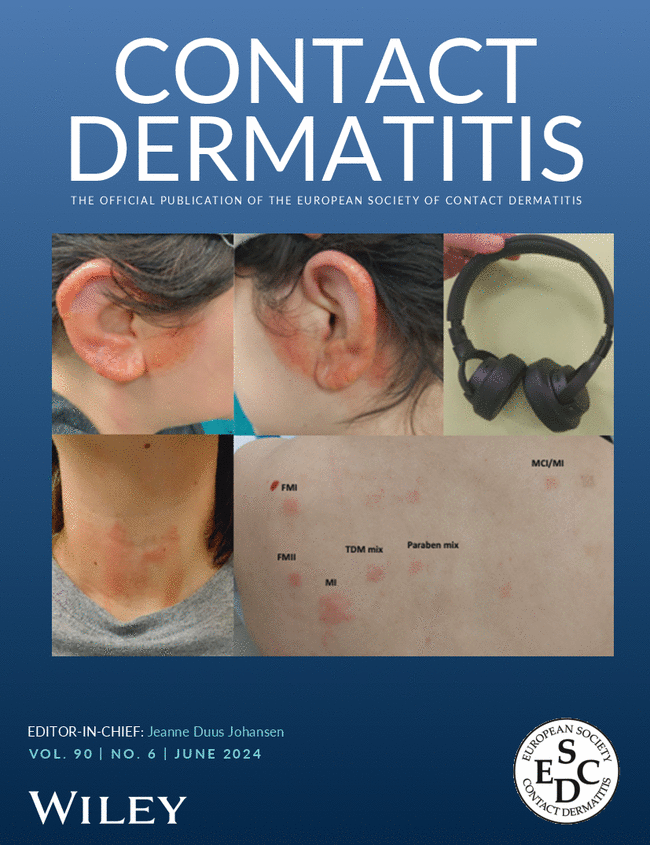In vitro characterisation of a novel rubber contact allergen in protective gloves
Abstract
Background
Allergic contact dermatitis (ACD) from protective gloves is often caused by rubber additives, such as accelerators. However, while accelerator-free rubber gloves are available, they still cause ACD in some individuals.
Objectives
A new allergen, 2-cyаnоethyl dimethyldithiocarbamate, (CEDMC), has recently been identified in accelerator-free gloves, and we here provide a first in vitro characterisation of CEDMC in a dendritic cell (DC)-like cell model along with three reference sensitizer rubber chemicals, consisting of tetraethylthiuram disulfide (TETD) and two xanthogenates.
Methods
Cellular responses after the exposure to the rubber chemicals were assessed using a transcriptomic approach, multiplex cytokine secretion profiling, and flow cytometry to determine DC model activation marker expression and apoptosis induction.
Results
CEDMC and all other sensitizers were classified as strong skin sensitizers with the transcriptomic approach. They all significantly increased IL-8 secretion and exposure to all except one increased CD86 DC activation marker expression. When tested, CEDMC induced apoptosis, however, delayed compared to TETD.
Conclusions
The in vitro data corroborate CEDMC, TETD, and investigated xanthogenates as skin sensitizers. Transcriptomic analyses further reveal unique cellular responses induced by CEDMC, which together with future study can contribute to better understanding of cellular mechanisms underlying the sensitising capacity of rubber chemicals.


 求助内容:
求助内容: 应助结果提醒方式:
应助结果提醒方式:


